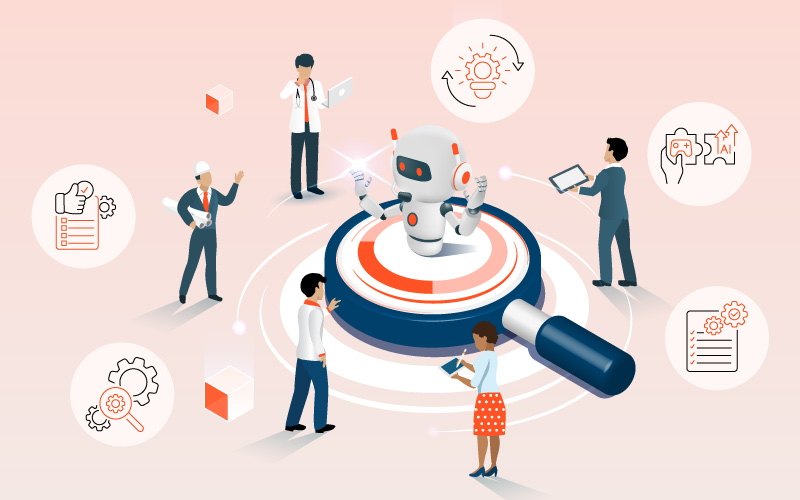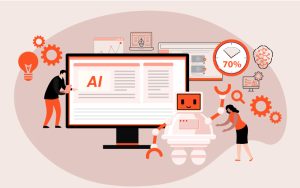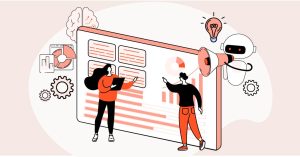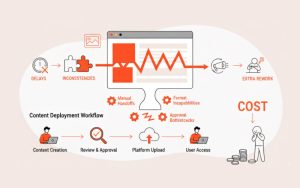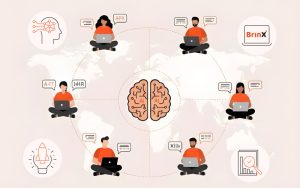Ever sat through a “mandatory training” that felt like song autoplay gone wrong? You click next, guess a few answers, and boom- certified. But when it’s time to use those skills? Crickets. That’s the problem: most training doesn’t match what people really need.
Fast-forward to 2025. Skills are aging out faster than your iPhone cable. New tools drop, roles shift, and suddenly the knowledge you had last year feels ancient. Companies can’t keep rolling out cookie-cutter courses, and you don’t want to waste time learning fluff.
Here’s the smarter play: AI. Instead of generic modules, it scans what you can do, what you can’t, and builds training that feels like a custom playlist- tight, relevant, zero filler.
That’s where skill gap analysis comes in. It’s the cheat code for knowing what’s missing and how to fix it. Let’s dig in.
Skill Gap Analysis in 2025: Why It Matters
Old-school skill assessments were like throwing darts blindfolded- you hoped to hit the target. AI? It’s more like using night vision goggles. You see the gaps clearly, fast, and without the guesswork.
Here’s how it works. AI pulls data from everywhere: your performance metrics, LMS activity, even project outcomes. It spots patterns a human manager would miss, like who’s cruising through tasks and who’s quietly struggling.
Natural Language Processing scans resumes, feedback, and even self-assessments. Predictive analytics looks ahead, showing which skills you’ll need six months from now- so you’re not training for yesterday’s problems. And benchmarking tools stack your team against industry standards, giving you that “where we stand” reality check.
What truly stands out here? Scale. You can’t run manual gap checks across hundreds of employees without losing your mind. AI does it in minutes, with way more accuracy.
So instead of cookie-cutter courses, you get insights that feel sharp, personal, and actionable.
And the real win? AI doesn’t stop at spotting gaps. It connects the dots straight into training. That’s where custom eLearning comes into play.
Benefits for Organizations & Learners
Here’s the thing- personalized training isn’t just a “nice perk.” It’s a straight-up power move for both sides.
For organizations:
You stop burning cash on courses no one needs. Training becomes lean, targeted, and tied to results that matter. Employees hit competency faster, projects move smoother, and suddenly your team isn’t just keeping up- they’re ahead of the pack. It’s ROI with actual receipts.
For learners:
No more sitting through three hours of “basics” when you already know the drill. You get content that’s relevant, short, and on-point. Motivation spikes because you’re not wasting time- you’re stacking skills that boost your competence in real-world situations. Plus, every module feels like a step toward career growth, not busywork.
The combo effect? Companies build stronger teams, employees build sharper careers. Retention goes up, frustration goes down, and both sides feel like they’re winning.
That’s the beauty of AI-driven personalization- it balances company goals with human needs. A rare win-win.
But pulling it off isn’t just plug-and-play. There are smart ways to roll this out without turning training into chaos. Let’s hit the best practices.
Implementation Best Practices
AI-powered training sounds slick, but you can’t just plug it in and hope for magic. The rollout matters. Here’s how to do it right.
-
Start with a skills map: Know what “winning” looks like for your team. Without that, AI’s just making playlists with no vibe. Define the skills tied to real business goals.
-
Pilot first: Don’t drop this across 5,000 employees on day one. Test with a small crew, see what works, and adjust. Think of it like sneaker drops- you test the hype before scaling.
-
Clean data is king: If your performance records are a mess, AI’s going to spit out garbage. Make sure the system’s reading the right signals.
-
Blend humans with AI: Managers, mentors, and coaches aren’t going out of style. They bring context and support where machines can’t.
Keep it fresh. Skills age out fast. Update learning content regularly, or your shiny new system becomes yesterday’s mixtape.
Follow these basics, and your AI rollout won’t just “work”- it’ll stick.
But let’s be real: even with all the hype, there are bumps on the road. Privacy concerns, bias in the data, and a bit of resistance from the team are all part of the game. Handle them right, and the system becomes less of a headache and more of an advantage for everyone involved.
When you get this balance right, AI stops being just a tool and starts being a cheat code for your learning strategy. It maps the gaps, guides custom training, and helps your team hit the right skills at the right time.
Level Up Your Learning Game
AI isn’t some magic wand, and it’s not taking over your learning journey. Pair it with human guidance, though, and training stops feeling like homework and starts feeling like a cheat code for your career. Handle privacy, bias, and resistance right, and your team won’t just adapt- they’ll perform at their best.
Here’s the deal: skill gap analysis powered by AI gives you a roadmap, and custom eLearning turns it into action. Your team hits the right skills at the right time, every time.
Want to see it in action? Get started with BrinX.ai

FAQs
What is adaptive learning, and how does AI contribute to it?
Adaptive learning adjusts the experience to the performance, preferences, and speed of individual learner. By altering the trip based on real-time data analysis of what a learner clicks, skips, or struggles with, artificial intelligence improves this.
Can AI really generate full courses from raw content?
Yes. Certain AI-powered services can analyze SOPs, manuals, and slide decks to generate structured modules with assessments and objectives. Although they significantly cut down on production time, these drafts still benefit from human inspection.
How is gamification supported by AI?
AI doesn’t create game mechanics, but it sets the foundation. It structures learning into modules, which instructional designers can then gamify, adding points, scenarios, or progress indicators that motivate learners.
What’s the benefit of combining AI and microlearning?
Complex material is decomposed by AI into goal-aligned, modular building pieces that are ideal for microlearning. This facilitates the creation of brief, efficient, and time-spaced learning excursions that improve retention.
Is this approach scalable across a global workforce?
Yes. AI-assisted course development is particularly effective at scaling training in domains where consistency is crucial and source information is already available, such as compliance, product knowledge, and onboarding.
Do I need to buy a platform to use this kind of AI course builder?
Not always. Some services, like the one developed under MITR, offer course generation as a project-based model, no platform lock-in, no licenses, just a secure workflow and editable output.
Can human instructional designers still add value after AI builds the draft?
Absolutely. In fact, they’re essential. AI handle’s structure and speed; humans bring voice, empathy, and interactivity. It’s not either-or, it’s a partnership.
How secure is this process when using sensitive documents?
Best-in-class tools encrypt content, never store source material beyond delivery, and meet enterprise privacy standards. Always check for data handling policies before sharing internal content.

Soft Skills Deserve a Smarter Solution
Soft skills training is more than simply information. It is about influencing how individuals think, feel, and act at work, with coworkers, clients, and leaders. That requires intention, nuance, and trust.


